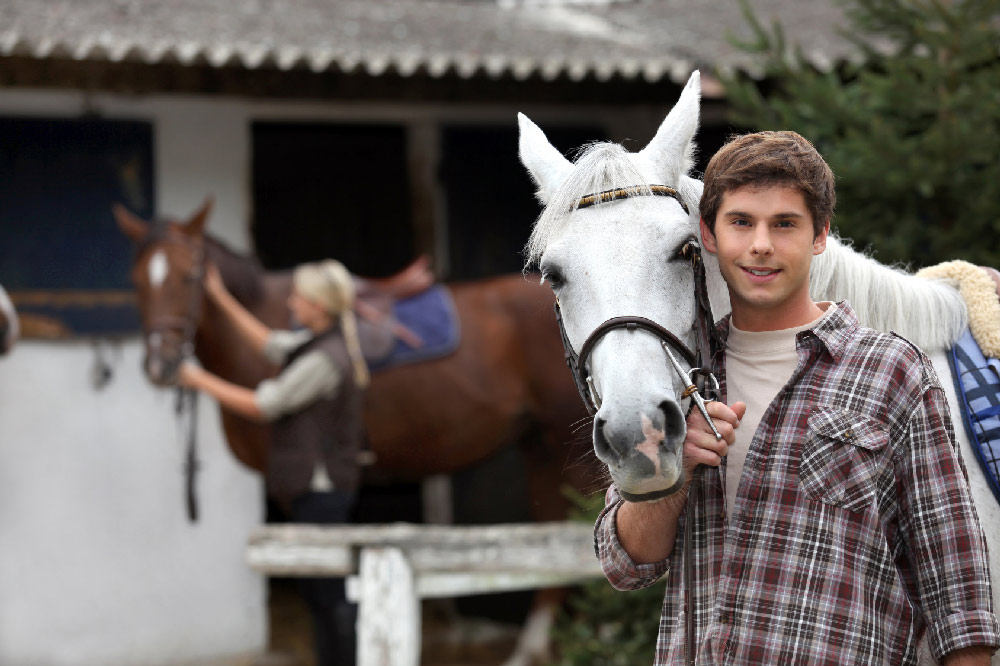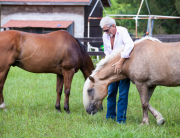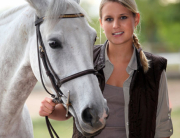Equine Therapy Principles
Equine therapy is a unique approach to behavioral therapy and counseling which uses the horse as an integral part of the therapy.
The success of equine therapy depends on allowing the patient to actively participate in new situations and experiences and then to process those experiences in a positive way.
In fact, equine therapy is the combination of the innate sensitivity and reflective emotional capacity of the horse and the experience of nurturing and caring for the horse while doing something in the natural world.
The therapist must have the skill to blend expertly all of these factors to create positive self-awareness and spiritual healing in the patient.
The horse’s ability to evoke and reflect emotions is legendary.
Download the Full Equine Therapy & Addiction Treatment Guide
As Linda Kohanov wrote in ‘The Way of the Horse’:
“[Horses] mirror, and help us recover, the beauty, power and nobility of our own spirit, that elusive Presence so easily lost in the frenzy and disconnection of civilized life. Now that horses are no longer obliged to work in our fields and carry us to war, they’re free to do something arguably more important: work on us.”
Leif Hallberg, in her book ‘Walking the Way of the Horse,’ points out that equine therapy benefits both the horse and the patient in a win-win relationship that balances the needs and desires of both the horse and patient, and binds them together with mutual respect.
It is when the patient is able to take the gentle lessons learned in the relationship with the horse and apply them to relationships with other people that the true benefit of equine therapy becomes apparent.
What Does Equine Therapy Teach?
Equine therapy teaches individuals to focus on the task before them and to hone the skills necessary to a relationship with a horse – the very same skills necessary to develop relationships with people.
The required skills include listening, observing, respect, collaborating, partnering, connecting, leading and following.
As the patient learns the delicate dance of building a relationship with the horse, the patient learns to apply those same skills to relationships with people. Broken relationships begin to heal, and the patient becomes more comfortable forming new relationships.
The burgeoning self-confidence and respect that the patient experiences during equine therapy help them to face additional life challenges that might once have seemed overwhelming.
Not any horse is a suitable choice for an equine therapy horse. The therapist must carefully select a horse whose temperament ensures the safety and well-being of both the horse and the patient.
The horse must have a stable gait if the therapy includes riding as well as caring for the horse. The horse must be sweet, good-natured and unlikely to take flight unexpectedly, even in response to loud or unexpected sounds or new experiences.
The horse should be able to tolerate attention from multiple people and should be 14 to 16 hands tall to accommodate people of all sizes. The horse should also have good manners and not be overly rambunctious.
Not every horse can be a therapy horse, but this is primarily a safety issue and not a spiritual one.
Carefully guided equine therapy provides a caring and safe relationship that helps guide people suffering from depression, addiction, learning disabilities, abuse, low self-esteem and other mental health issues back to a healthy feeling of well-being.
Once the spirit of the horse has healed the individual, the person can go on to heal other aspects of their life.
Learning More About Equine Therapy
In the coming days, we will learn about more benefits of equine therapy, how equine therapy works in addiction treatment, and the history of the therapy. In the meantime, you can download the entire Equine Therapy & Addiction Treatment eBook here.



